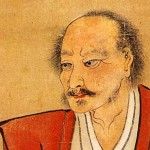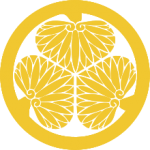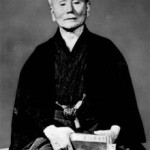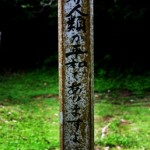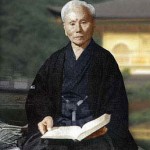Although I haven’t spoken much regarding the classic masters of the Martial Arts, I know that I will talk about them later; so this is just a pre-emptive strike. This will be a “work-in-progress” page and will eventually have a short description for each, followed by a page with more detail and links to references, etc.
The focus right now is on Karate masters, but will eventually include founders and other significant persons of many styles.
Japanese
Miyamoto Musashi – 17th Century CE Japanese swordsman (born in 1584, died 1645), author of Go Rin No Sho (The Book of Five Rings) and developer of Niten Ichi Ryu (The school of the strategy of two heavens as one) school of swordsmanship where practitioners use two swords simultaneously. One of the most influential swordsmen in Japanese history, believed to have fought over 60 battles from an early age (around 13 years old) until his death, but ironically was not highly sought after in his later life. He was a contemporary of Yagyu Munenori, who was a sword instructor to the Shogun, a position that Musashi had applied for and was denied.
Yagyu Munenori – 17th Century CE Japanese swordsman (1571 – 1646) was the sword instructor to three of the Tokugawa Shoguns in the Edo period. His book, The Life-Giving Sword, is one of the foundational written works for modern martial arts practices that have made their way into the modern world. He is referred to as Musashi’s contemporary rival, but the two of them never met.
“Tode/Toudi” Sakugawa – The late 18th to mid-19th century CE Okinawan martial arts master, instructor to Bushi Matsumura, and was the creator of the kata Kusanku (Kanku dai). His teacher, Kwang Shang Fu (or Kusanku), taught him the ways of Chinese Wushu, and thus Sakugawa earned the nickname Tode (To and De, meaning “Chinese Hand”) bringing them back to Okinawa.
“Bushi” Matsumura Sokon – The late 18th century CE Okinawan martial arts master, student of Tode Sakugawa, who would instruct some of the foundational fathers of modern Karate. He would teach Itosu Anko, and Anko’s student Gichin Funikoshi – the commonly understood father of modern karate, and founder of the Shotokan style of Karate.
Itosu Anko
Funakoshi Gichin
Chinese
Kusanku (Kwang Shang Fu)
Aikido
Morehei Ueshiba – Also known as “O Sensei”, and is the founder of Aikido. Born in the late 19th, early 20th century CE Japan, he spent many years studying martial arts, and challenged the convention that martial arts was about violence.
Influential Figures
Takuan Soho

